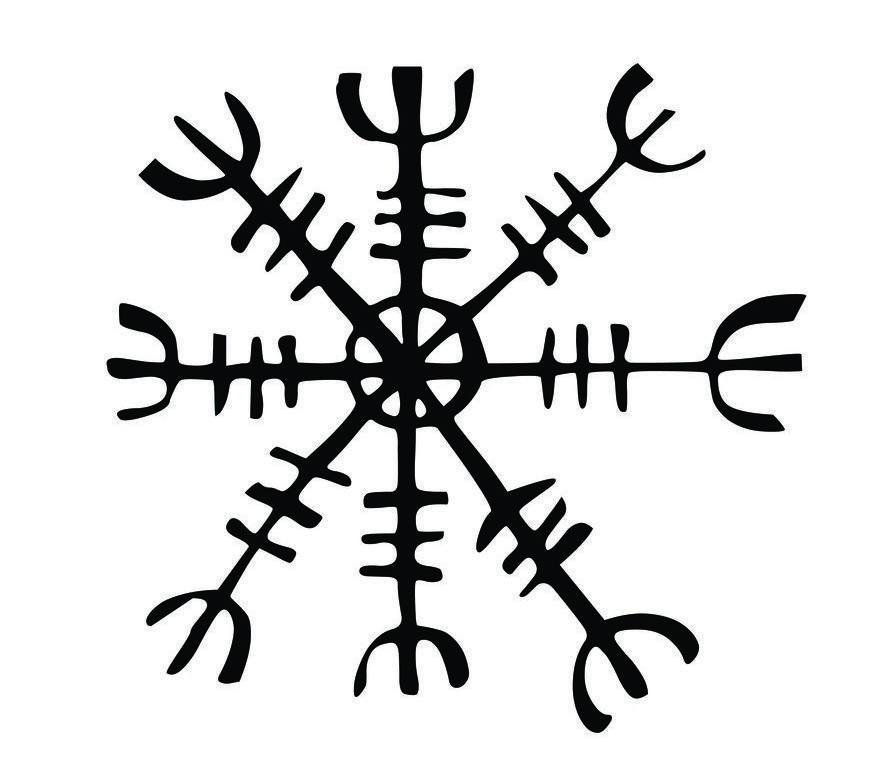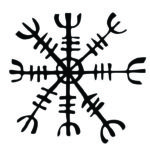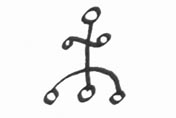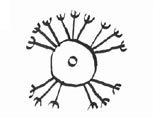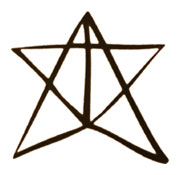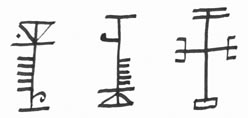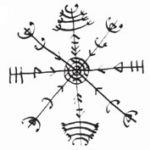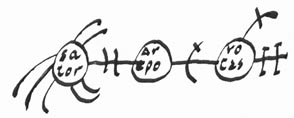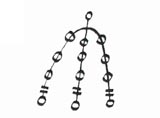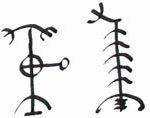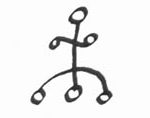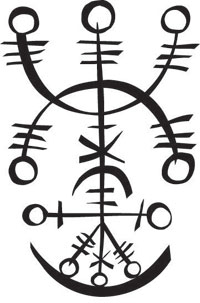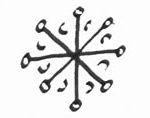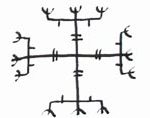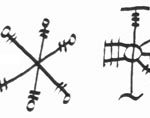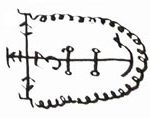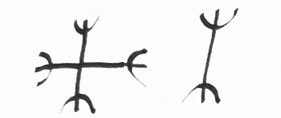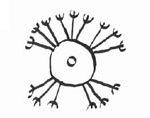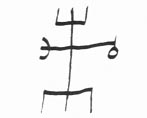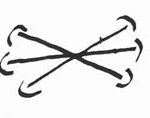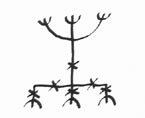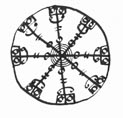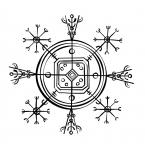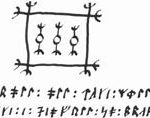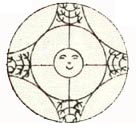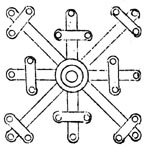All of the signs and staves seen here can be found in Icelandic grimoires, some from the 17th century, some from later times though all of them seem to be related.
The origin of this peculiar Icelandic magic is difficult to ascertain. Some signs seem to be derived from medieval mysticism and renaissance occultism, while others show some relation to runic culture and the old Germanic belief in Thor and Odinn. Much of the magic mentioned in court records can be found in grimoires kept in various manuscript collections.
The purpose of the magic involved tells us something of the concerns of the lower classes that used them to lessen the burden of living in a harsh climate.
Books on the subject:
Below is basic information about the staves but for further study, books about staves and Icelandic magic can be found in the online shop.

Categories of magical staves
Protection
Helm of Awe
Helm of Awe - Ægishjálmur - exists in various forms, though all are a variation of crosses with three-forked ends. It is mentioned in Eddic poetry. It is a protection stave against evil spirits, enemies and the aggression and anger of rulers. The stave must be carved into a lead plate, which is then pressed onto the forehead between the eyes of the helm of Awe and the skin. The sorcerer must say what the stave protects against: "I wash off my enemies, robbery and anger of rich people". In doing so, he gains the courage needed to go against what he fears.
The Nine Helms of Awe
These are the nine helms of awe that everyone that deals with knowledge cannot do withour and each and every one must be used.
Rings of king Charlemagne
These are the nine rings of help sent by God with his angel to Pope Leo so he could give them to king Charlemagne for protection against enemies in accordance with what follows. In nomine patris et filio et spiritu sancty Amen.
The first three as follows:
The first three rings and the first protects against all the pranks of the devil and enemies' attacks and troubled mind; the second against sudden death and collapse and all fear of the heart; the third against anger of enemies and that their minds be troubled when they look at you and may be filled with numbness and turn away.
The second three circles are as follows:
The second three circles and the first are for sword wounds; the second for devilish wiles and not losing one´s way; the third against the wrath of powerful men and all persecution by evil men.
The third three circles are formed as follows:
These third three circles and the first gives victory in legal disputes and popularity among all men; the second for all fear; the third protects against vices of the body and debauchery.
These nine circles shall be worn on the breast or on either side when expecting one's enemy.
Finance
The Necropants
One of the most difficult feats mentioned in Icelandic grimoires and folk tales is undoubtedly the nábrók (literally: necropants). This is a tool to gather wealth by supernatural means. To begin with the sorcerer has to make a pact with a living man and get his permission to dig up his dead body and skin it from the waist down.
To prevent theft
Love
Farming
To make your sheep docile
To make your sheep docile
Take juniper and willow that grow facing east when the sun rises and carve this stave on it and let your sheep walk over it in summer and under it in winter.
Carve these signs along with your initials on scrub oak and bury it under the threshold where your sheep pass over.
Cause harm
Sleep and dreams
Other
Hills Stave
Carve this stave onto a rowan post and shave it down into a wand. Then color the grooves with blood from beneath the root of your tongue, and then strike with the end upon which the stave is carved. Whether it is a hill or a rock, it will open.
Ef sprotanum er slegið í hóla eða steina opnast þeir.
Butterknot
If a woman wants to create a tilberi she has to dig up a human rib in a graveyard early on Whitsunday, wrap it in grey wool and preserve it between her breasts. The next three Sundays at communion she has to spit the holy wine on the bundle which will then come alive. Then the woman has to carve a nipple on her inner thigh on which the tilberi will hang on and nourish itself.
en it is fully grown the woman can send it into the neighbouring pastures to steal milk from cows and sheep. When the woman becomes old the tilberi becomes a burden and the only way she can get rid of it, is to order it to gather all the sheepdropping in three highland pastures. Eager to get back on the nipple the tilberi will overexert itself and explode, leaving only a human rib beside the heap of droppings.
The milk-stealing tilberi is the only magic in Icelandic folklore that can only be performed by women. A fully grown tilberi could lie across a sheep´s back and suck two tits at the same time and when it would roll back to its farm it would spew the milk into its mother churn. The butter made from the milk would fall into little pieces if the magical sign smjörhnútur (butterknot) was drawn on it.
tilberinn sig, svo eftir liggur einungis mannsrifið úr kirkjugarðinum.
Making a tilbera, or snack, is only women's magic, and according to folklore, women used it to drag rocks to the farm, while the tilbera ran out into the pastures at the mother's command and sucked milk from ewes. The tilberi jumped onto their backs and sucked them with both heads on opposite ends of their bodies. The tilberi mother then made butter from the milk, which is called tilberi butter.
The Butter Knot magic stave is used to know if real butter is served on the table by carving it into the stick of butter. If it is tilberi butter, it crumbles like foam, or explodes into a thousand pieces.
Want to know more about Icelandic magical staves?
We publish and sell books about icelandic magical staves.

